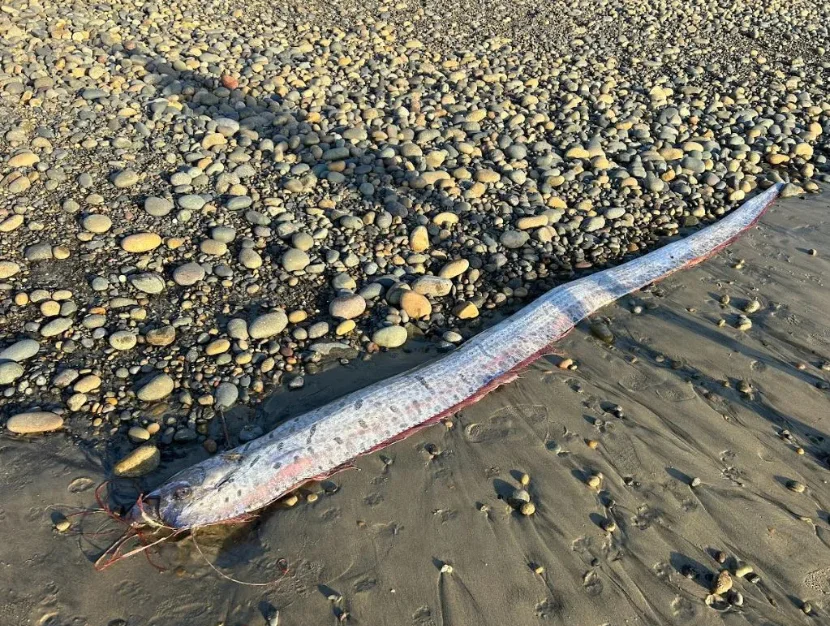A dead oarfish found along the Southern California coast marks the state’s third sighting of the so-called “doomsday fish” this year.
The roughly 10-foot oarfish was found on Nov. 6. at a beach in Encinitas, roughly 25 miles north of San Diego. The Scripps Institution of Oceanography said PhD candidate Alison Laferriere spotted the fish wash up on shore.
While only one of three unusual appearances in California over the last several months, according to Japanese folklore the rare sighting is considered a harbinger of doom.
The sight of a “doomsday fish” in shallow waters is a sign that an earthquake is near, the travel outlet Atlas Obscura said, dating back to 17th century Japan.
Japanese folklore indicates the fish was property of servants of the sea god Ryūjin. Thus, the fish are also known as “ryugu no tsukai,” which means “messenger from the sea god’s palace.”

How Did The Oarfish Die?
It’s unknown how the rare oarfish washed along the Encinitas shore this month, but the elusive specimen will undergo a necropsy to determine cause of death.
Later, it will be preserved for future study and become a part of the Scripps’ Marine Vertebrate Collection, one of the biggest collections of deep-sea fish in the world.
“We took samples and froze the specimen awaiting further study and final preservation in the Marine Vertebrate Collection,” Scripps’ in-house fish expert Ben Frable said in a statement shared on social media.
“This specimen and the samples taken from it will be able to tell us much about the biology, anatomy, genomics and life history of oarfishes.”

Where Were The Last Doomsday Sightings?
In August, a 12-foot-long oarfish was captured by a group of “sciencey” kayakers and snorkelers swimming at La Jolla Cove in San Diego.
A second dead oarfish was found in Orange County’s Huntington Beach in September, according to CNN, Frable said.
The deep-sea fish are considered “incredibly rare” since less than 25 have been seen in Southern California waters in over a century, Frable previously told BBCNews.
They have been spotted in all the waters of the world. They are reportedly spotted in Maine, New Jersey, Taiwan, and Japan, among other places.
According To Scientists, What Do Dead Oarfish Sightings Tell?
Scientists cannot theorize why three oarfishes washed up in the past months, saying that every specimen collected gives a unique opportunity to learn more about the species.
Especially since there is more than one variable at play in the so-called “strandings” of the oarfish, including shifts in the climate patterns of El Niño and La Niña, Frable said last week.
It may have to do with changes in ocean conditions and increased numbers of oarfish off our coast. Many researchers have suggested this as to why deep-water fish strand on beaches,” Frable said.
“This wash-up coincided with the recent red tide and Santa Ana winds last week but many variables could lead to these strandings.
Many counties in California, including Encinitas and La Jolla, are classified as Marine Protected Areas where there is a prohibition on taking organisms.

Why Were Multiple Spotted In 2011?
There were reported sightings of the fish prior to the 2011 Tohoku earthquake and Fukishima nuclear disaster, but according to Hiroyuki Motomura, professor of ichthyology at Kagoshima University, there is no scientific evidence that the two might be related, he told New York Post last year.
“There is no scientific evidence of a connection, so I don’t think people need to worry,” Motomura said. “I believe these fish tend to rise to the surface when their physical condition is poor, rising on water currents, which is why they are so often dead when they are found.”
The “connection” between the two might have to do with the fact that the shimmery creature typically lives in the deep sea, dwelling anywhere between 700 and 3,280 feet below the surface, BBCNews previously reported. And it rarely comes up to the surface.
















